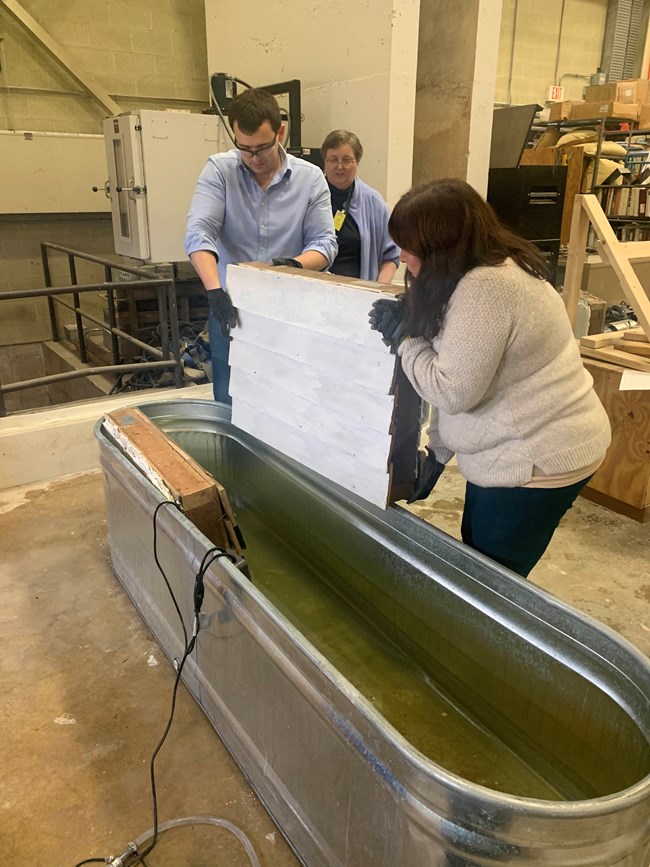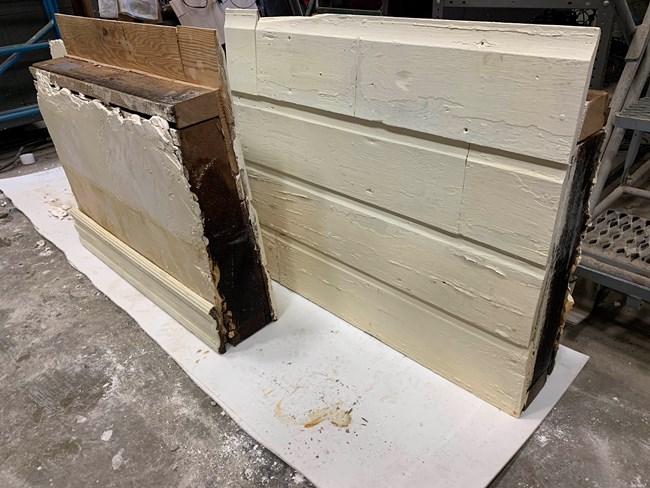Last updated: November 19, 2024
Article
Testing Traditional Materials for Flood Resilience

NPS photo
The National Park Service partnered with the US Army Corps of Engineers’ Construction Engineering Research Laboratory (CERL) in 2018 to conduct laboratory tests of traditional materials in simulated flood conditions. One goal of these tests is to understand how various traditional materials, finishes, and assemblies react to inundation, drying, and cleaning. Materials and finishes that have been tested include soft brick, structural clay tile, plaster, stucco, lime wash, beadboard, old-growth lumber and siding, and several common floor types.
A second goal of the tests is to provide data comparable to many modern construction materials in the Federal Emergency Management Agency’s (FEMA) Technical Bulletin 2-08, Flood-Resistant Materials Requirements for Buildings Located in Special Flood Hazard Areas in accordance with the National Flood Insurance Program.
Although the tests have not yet yielded conclusive decisions regarding the ratings of various materials in the FEMA framework, the test results and data may be useful in various applications.
Round 1. Completed in 2019; this study used ASTM E3075-16, “Standard Test Method for Water Immersion and Drying for Evaluation of Flood Damage Resistance” to test sample wall and floor assemblies.
Testing the Flood Resilience of Traditional Building Assemblies
Jenifer Eggleston, Jennifer C. Parker, Mary F. Striegel, Peter B. Stynoski, Jennifer Wellock
This article originally appeared in Vol. 52, No. 1, of the APT Bulletin: The Journal of Preservation Technology. © Association for Preservation Technology, 2021. For more information about the Association for Preservation Technology, please visit www.apti.org.
Flood Resilience of Traditional Building Materials: Report of simulated flood immersion according to ASTM E3075 standard procedures
Peter B. Stynoski, Thomas A. Carlson, Abigail M. Brake, Clint M. Arnett, Marion L. Banko, Matthew M. Landi
US Army Corps of Engineers, Engineer Research and Development Center, ERDC/CERL TR-19-8, May 2019

NPS photo
Round 2. Completed October 2024; this study continued use of ASTM E3075-16 to test individual materials isolated from the assemblies previously tested in Round 1. Materials tested include wood-based, composite, brick-based, and nonporous traditional architectural materials.
Flood Resilience of Individual Traditional Building Materials
Natalie A. Becerra-Stasiewicz, Peter B. Stynoski, Clint M. Arnett, James M. Christensen, Sean W. Morefield, Veronica L. Gerios, and Madison L. Story
US Army Corps of Engineers, Engineer Research and Development Center, ERDC/CERL TR-24-12 October 2024
Round 3. Began in February 2024.
